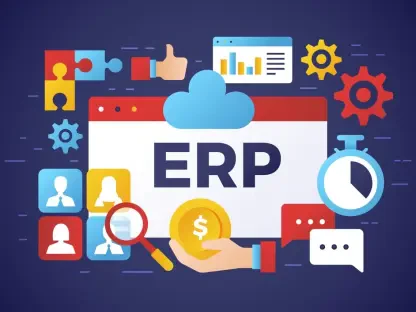We’re thrilled to sit down with Vijay Raina, a renowned expert in enterprise SaaS technology and tools, and a thought leader in software design and architecture. With his deep expertise in the evolving landscape of AI-first and SaaS products, Vijay offers invaluable insights into the seismic shift from traditional pricing models to transactional and hybrid structures. In this conversation, we explore the driving forces behind these changes, the nuances of different pricing strategies, and how companies can align their models with the true value they deliver—especially when tapping into labor budgets rather than software spend.
How is AI’s ability to handle tasks from start to finish reshaping the way companies approach pricing for their products?
AI’s capacity to manage entire workflows end-to-end is a game-changer. Unlike traditional software that often supports just a piece of the puzzle, AI can take over full processes, delivering outcomes that directly replace or enhance human effort. This shifts the value proposition dramatically. Companies can now price based on the tangible results or labor savings they provide, rather than just licensing a tool. It’s why we’re seeing a move away from static SaaS models toward transactional pricing, where the cost reflects the actual work done or value created.
What’s behind the growing preference for transactional pricing over traditional SaaS models in AI-first products?
The core driver is alignment with value delivery. Traditional SaaS pricing, often based on seats or flat fees, doesn’t scale with the impact a product has as a customer’s usage grows. Transactional pricing, whether based on inputs like API calls or outputs like completed tasks, lets companies capture more value as customers derive more benefit. Plus, with AI targeting labor budgets—which are far larger than software budgets—transactional models open up bigger markets by pricing closer to the cost of human work that’s being replaced.
How does selling into labor budgets differ from software budgets, and why is this shift significant for AI-first companies?
Selling into labor budgets means you’re competing with the cost of human effort—think salaries, benefits, and overhead—which is a much larger pool of money compared to software budgets, where you’re up against other tools for limited IT spend. For AI-first companies, this is huge. Labor is often seen as mission-critical, so if you can prove your product saves on headcount or boosts productivity, you can justify higher prices. It’s a shift from being a line item in IT to being a strategic investment in operations, unlocking bigger total addressable markets.
What are the key benefits of transactional pricing compared to the more predictable SaaS models?
Transactional pricing shines in its ability to scale revenue with customer growth. As a customer uses the product more—processing more data or completing more tasks—the revenue grows without the constraints of seat limits. This directly ties pricing to value delivered, which is especially powerful for AI solutions that drive efficiency. Unlike SaaS, where you might undervalue your impact as usage spikes, transactional models let you charge for each unit of work, ensuring you’re not leaving money on the table.
What challenges do companies face with transactional pricing, particularly in terms of financial planning?
The biggest hurdle is predictability. With transactional pricing, revenue can fluctuate wildly based on customer usage. One quarter might be a windfall if clients lean heavily on your solution, but the next could tank if their needs drop off. This makes it tough to forecast for investors or internal planning. Unlike SaaS, where annual contracts lock in steady cash flow, transactional models demand more agile financial management and often require buffers to handle the ups and downs.
Can you walk us through what a hybrid pricing model looks like and how it addresses the limitations of pure transactional or SaaS approaches?
Hybrid pricing combines the best of both worlds. Typically, it starts with a tiered subscription that guarantees a baseline revenue—think a monthly or annual fee that includes a set amount of usage credits. If a customer exceeds that, they’re billed for overages, often quarterly, based on actual consumption. This gives companies some predictability from the fixed component while still capturing extra value as usage scales. It’s a sweet spot for AI-first firms wanting stability for investors but flexibility to grow with customer needs.
How does the frequency of a tool’s usage influence whether a company should opt for fixed or usage-based pricing?
Frequency is critical. If a tool is used constantly—like a messaging app—usage-based pricing can create friction. Users start overthinking every action, wondering if it’s worth the cost, which can dampen adoption. Fixed pricing, like a flat fee, removes that mental barrier for high-frequency tools. On the other hand, for tools used sporadically—say, a financial analysis platform active only during planning cycles—usage-based pricing works better because customers pay only when they extract value, and it’s easier to justify.
Where a product fits into a customer’s workflow can impact pricing strategy—can you explain how this plays out?
Absolutely. If your product is at the start of a workflow—like an AI handling all incoming customer support queries—you can predict volume based on historical data, which supports more stable pricing and planning. But if you’re plugged in later, say, only tackling complex issues after initial triage, your usage depends on someone else’s decisions, making revenue harder to forecast. Being early in the workflow often allows for higher value capture and better alignment with either transactional or hybrid models since you’re processing more volume.
Why is it a risky move to compete on price alone when launching an AI-first product?
Competing on price is a trap. It might get you early customers, but you attract the wrong ones—those focused on cost over value. These customers churn fast when a cheaper option appears, and they skew your understanding of product-market fit. You think you’ve got traction, but it’s just bargain-hunting. Plus, it sparks a race to the bottom with competitors, eroding margins for everyone. It’s better to price at market rates and win on differentiation—proving your value proposition—than to undercut and sabotage long-term sustainability.
What’s your forecast for the future of pricing models in the AI-first space over the next few years?
I see hybrid models becoming the dominant approach as companies balance the need for predictable revenue with the reality of value-driven consumption in AI applications. Transactional elements will grow, especially as AI continues to displace labor costs, but pure SaaS will wane for many use cases where value isn’t tied to seats or constant access. We’ll also see more innovation in how outputs are priced—focusing on outcomes over inputs—as businesses strive to align costs even closer to the labor savings or results they deliver. It’s an exciting evolution to watch.









